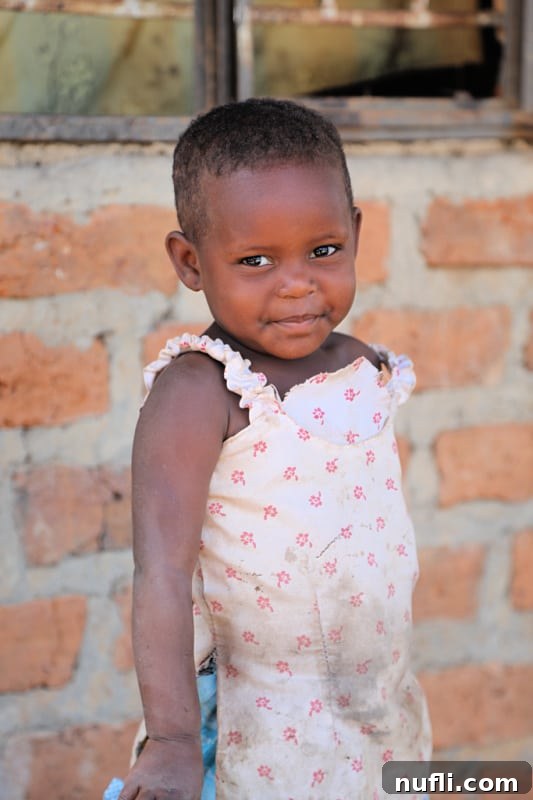Transforming Lives in Uganda: My Journey with World Vision USA
Embarking on a journey to Uganda with World Vision USA was an experience that profoundly reshaped my understanding of community development and the tangible impact of global partnerships. As I prepared for the trip, I admit I carried a mixture of anticipation and apprehension. I knew we would confront challenging realities, delve into complex socio-economic issues, and that my emotions would undoubtedly be on a rollercoaster. This wasn’t merely a travel expedition; it was an immersion into the heart of communities working tirelessly for a brighter future. Prior to our departure, my family and I took a significant step: we decided to sponsor a spirited 9-year-old girl named Shanita, who resides in a rural Ugandan village. This personal connection immediately grounded the experience, transforming abstract concepts of aid into a deeply personal mission.
My time in Uganda illuminated a fundamental truth: sponsoring a child through World Vision extends far beyond an individual donation; it ignites a beacon of hope that permeates entire communities. Before this trip, I, like many, harbored a simplistic view of child sponsorship, imagining funds being sent directly to a child’s family. The reality, as I discovered, is far more strategic, sustainable, and impactful, focusing on holistic transformation rather than temporary fixes.
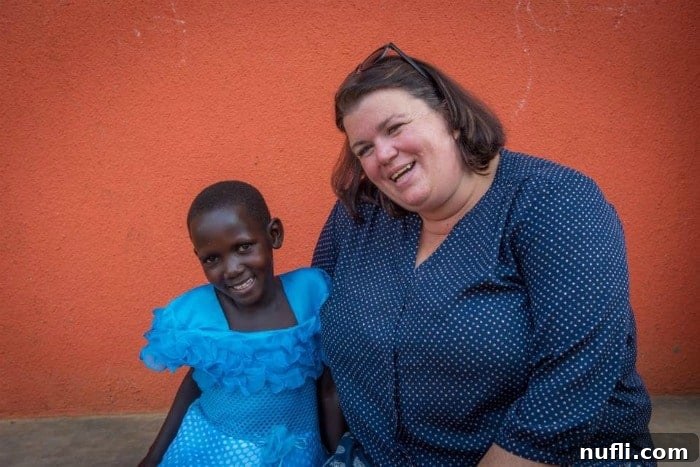
Understanding the World Vision Model: Empowering Communities for Sustainable Change
A crucial insight I gained during my visit was World Vision’s distinctive approach to child sponsorship. They do not directly transfer monthly donations to the families of sponsored children. Instead, their strategy is centered on comprehensive, long-term community development. This model is designed to create self-sufficient, resilient communities where children not only survive but thrive. By focusing on the entire community, World Vision ensures that fundamental needs are met, environments are safe for children, and sustainable solutions are implemented for lasting impact.
Their development plans are meticulously crafted, often spanning 10 to 25 years, depending on the specific needs and challenges of each community. These multi-faceted plans address critical areas such as access to safe and clean water, ensuring quality education for all children, and empowering parents with vital knowledge in nutrition, modern farming techniques, and robust child protection strategies. This integrated approach means that every dollar donated contributes to a powerful ripple effect, lifting not just your sponsored child, but their entire village towards a brighter, more secure future.
Real-World Impact: Voices from the Communities
Throughout our journey, we bore witness to countless communities in Uganda that have been profoundly transformed by the enduring commitment of World Vision. One particularly moving encounter was with a local community group dedicated to child protection. When I asked them about their perspective on World Vision’s role, their responses were unanimous and heartfelt. They articulated how World Vision had not just offered aid, but had empowered them with essential tools and knowledge, enabling them to instigate profound positive changes in their lives and the lives of their children.
Through nutrition classes, for instance, parents gained critical understanding of balanced diets and food preparation, ensuring their children received proper nourishment and grew up healthy and strong. Beyond physical well-being, these communities were equipped to safeguard their most vulnerable members. They learned proactive measures to prevent abhorrent practices like child sacrifice and protect young girls from the devastations of early marriage. This empowerment fostered a collective sense of responsibility and agency, creating a safer, more nurturing environment where children could genuinely flourish, free from the shadows of fear and exploitation.

Advancing Inclusive Education: A Landmark for Uganda
Our visits to local schools were particularly inspiring, revealing significant strides in educational infrastructure and inclusivity. We witnessed the construction of additional school buildings, designed to accommodate over 800 children from surrounding communities. What struck me most was the dedicated section being built specifically for children with disabilities—those who are learning disabled, visually impaired, hearing impaired, or physically disabled. This initiative represents a monumental leap forward for Uganda. Historically, children with disabilities often faced marginalization, sometimes even being sent to witch doctors due to prevailing superstitions and lack of understanding. World Vision’s investment in inclusive education is not just about physical buildings; it’s about transforming societal attitudes and ensuring every child, regardless of ability, has the right to an education and a hopeful future.
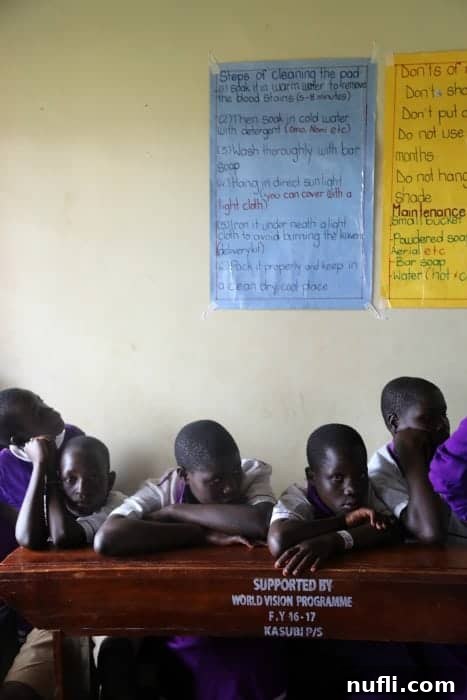
Empowering Girls Through Education: The Reusable Pad Initiative
Among the most innovative and impactful programs we encountered was an after-school club. This co-educational club brings together students to collectively sew reusable sanitary pads for girls in their school. The significance of this initiative cannot be overstated: previously, many girls in Uganda would miss anywhere from three to five days of school each month due to their menstrual periods, leading to significant educational setbacks and increased vulnerability. The reusable pads, skillfully crafted by their peers, are distributed with the guidance of the head female teacher, who also educates young girls on proper usage and care. This simple yet profound program ensures that girls can attend school consistently, pursue their education without interruption, and ultimately break down barriers to their academic and personal success. Beyond keeping them in classrooms, this initiative also provides an added layer of protection against the risks of rape, child marriage, and child sacrifice, reinforcing the school environment as a safe haven for learning and growth.
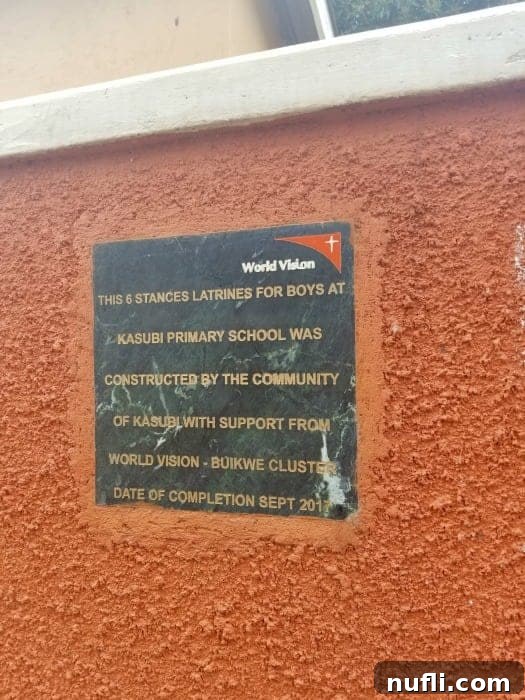
Prioritizing Health, Hygiene, and Sanitation
World Vision’s commitment to community well-being extends crucially to health and sanitation. Recognizing the profound link between hygiene and overall health, they construct modern, clean latrines at schools and within local communities. This infrastructure is paired with essential education for both students and teachers on the critical importance of proper handwashing after using the restroom. Simple as it may seem, this practice dramatically reduces the spread of preventable diseases, leading to healthier children who miss fewer school days and healthier communities overall.
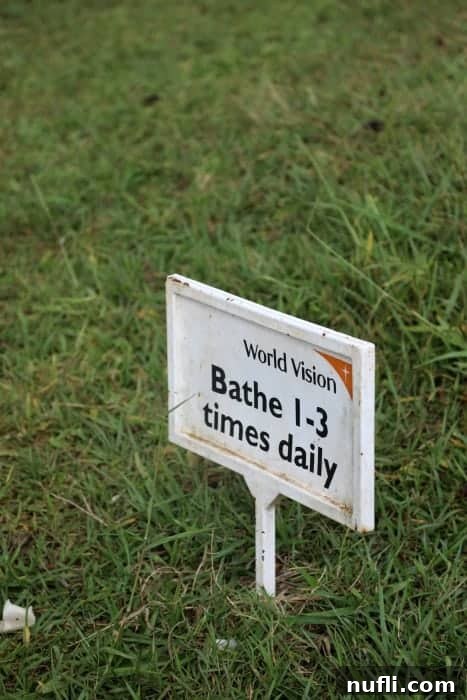
Furthermore, World Vision strategically places informative signs throughout school grounds. These vibrant posters serve as daily reminders for students and teachers alike on topics such as personal hygiene, the importance of abstaining from early sexual activity, and the immense value of their education. These seemingly simple visual cues foster a culture of health-consciousness, responsible decision-making, and mutual respect, embedding vital life lessons into the daily routines of the school community.

Enhancing Educational Infrastructure: Staff Housing with Solar Power
Sponsorship donations also play a pivotal role in strengthening the foundation of educational institutions themselves. At one particular large school in Uganda, we observed the tangible benefit of new staff housing, built with support from World Vision. These homes are not just structures; they are equipped with solar panels, providing a sustainable source of electricity. This initiative addresses a significant challenge: attracting and retaining quality teachers in rural areas. Many educators face arduous commutes, often traveling for hours to reach school. By providing comfortable, on-site housing, teachers can live closer to their workplaces, be available for emergencies, and dedicate more energy to their vital teaching roles. This investment in teacher welfare directly translates into a more stable and higher-quality learning environment for hundreds of children.

Fostering Economic Empowerment: The Farming Co-operative Model
One of the most inspiring examples of sustainable community development was our visit to an incredible farming co-operative. This group of dedicated individuals works collaboratively not only to feed their own families but also to generate income by selling their produce in bulk. They shared with us how classes and training provided by World Vision have been instrumental in their success. These sessions taught them best practices for crop selection, identifying the most nutritious beans and produce to cultivate for both family consumption and market sale. Armed with this knowledge, they now strategically grow crops with high nutritional value, ensuring their families receive essential nutrients. We were particularly impressed when they proudly presented their business plan, which included ambitious goals for expanding their co-op to support even more families in the area.
The work of this farming co-operative exemplifies a powerful cycle of local empowerment. Beyond sustaining their own households, they actively contribute to the broader community. They supply fresh produce to local schools, ensuring that children receive nutritious lunches, which, in turn, improves their concentration and learning abilities. Members of the co-op can access small loans when needed, providing a vital safety net for their families during challenging times. Crucially, they are learning and implementing advanced farming practices, transitioning from basic subsistence farming to a more productive, market-oriented approach. This shift not only enhances food security but also creates economic opportunities, allowing them to produce a surplus of goods to sell in local markets, thereby boosting their collective income and improving their overall quality of life.
Join the Movement: Your Impact Through Child Sponsorship
These are just a handful of the countless ways World Vision is actively partnering with local communities across Uganda, catalyzing change and building futures. My visit illuminated the profound, tangible differences that strategic, community-focused development can make. The impact of even a modest monthly donation is truly astounding, creating ripples of positive change that empower individuals, educate children, improve health, and foster economic independence.
If you’ve been moved by these stories and are considering how you can contribute to global development, I wholeheartedly encourage you to sponsor a child through World Vision. Explore the profiles of these remarkable children in Uganda who are eagerly waiting for a sponsor to help unlock their full potential. My family and I are now sponsoring two children in Uganda, and we are already contemplating adding another, having seen firsthand the incredible transformation our support enables. The impact of a $39 monthly donation is truly a testament to the power of collective compassion and strategic investment in human potential.
Further Insights into Our Uganda Journey:
A Year On: Reflections from Visiting Uganda
Uganda Changed Me: A Personal Account
